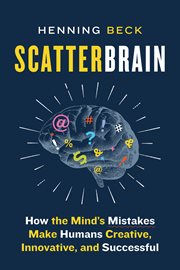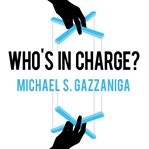Review by Choice Review
The intention of this well-written book is to reconsider the evidence supporting the popular mirror neuron theory. This theory proposes that motor cells in the brain are also activated by the sight of movement in others, i.e., that mirror neurons are important for imitative behaviors and perhaps even human empathy. Hickok (Univ. of California, Irvine), a neuroscientist specializing in language, makes a strong case that while mirror neurons do exist, there are minimal data to support the grand claims of their functional significance. In ten relatively brief and engaging chapters, Hickok describes the experiments that originated the mirror neuron theory, subsequent studies supposedly providing additional support, and then numerous examples of anomalies, contradictory data, and alternative interpretations. It is advisable to read the two appendixes on brain organization and imaging techniques before starting the main text. This book is timely as the mirror neuron theory has been extremely hyped in the field of neuroscience, particularly in relation to autism. However, a great deal of controversy on the subject does exist, and The Myth of Mirror Neurons offers a compelling investigation of the theory's weaknesses. Summing Up: Recommended. All academic, general, and professional audiences. --Carrie Leigh Iwema, University of Pittsburgh
Copyright American Library Association, used with permission.
Review by Booklist Review
Since 2009, Hickok has been a one-man storm cloud raining on the parade of researchers celebrating the discovery of mirror neurons. These researchers have claimed that in a type of neuron first isolated in macaque monkeys, they have found how the brain simulates mirrors actions performed by others. This mirroring, they claim, ultimately explains distinctively human attributes, including language and empathy. But as he expands on a much-debated article in the professional literature, Hickok pokes holes in the mirror-neuron paradigm. This paradigm becomes glaringly inadequate in its explanation of language and in its diagnosis of autism as a deficiency of mirror neurons. Hickok does laud mirror-neuron pioneers for stimulating much-needed debate about the models cognitive scientists use to understand the brain. And he predicts that this debate will ultimately incubate a conceptual sophistication incorporating mirror neurons in a new taxonomy of sensory motor cells inclusive enough to account for the way the brain processes sensory input and governs physical actions. A bracing foray into the frontiers of twenty-first-century science.--Christensen, Bryce Copyright 2010 Booklist
From Booklist, Copyright (c) American Library Association. Used with permission.
Review by Publisher's Weekly Review
Hickok, professor of cognitive science at the University of California, Irvine, frames his book around a straightforward question: "How is it possible that a cell in the motor cortex of a monkey can provide the neural blueprint for human language, empathy, autism, and more?" His answer, presented with great clarity and detail, is equally straightforward: it can't. Hickok balances his exploration of the hype surrounding the importance of mirror neurons with a careful analysis of the scientific literature, always attempting to ensure that conclusions are well supported by available data. In fact, he firmly believes that conclusions have far outpaced data. When he takes on the assertion that problems with mirror neurons are the cause of autism, he does not sugarcoat his finding that "the broken mirror hypothesis does not fare well in light of empirical facts." He is equally confident that mirror neurons have not provided clues to the evolution of language, empathy, or theory of mind. Hickok's skepticism toward the claims associated with mirror neurons began when he taught a course on the subject, and thanks to those origins his impressive handling of basic neuroscience makes a complex topic understandable to the general reader as he delves into cutting-edge science. (Aug.) (c) Copyright PWxyz, LLC. All rights reserved.
(c) Copyright PWxyz, LLC. All rights reserved
Review by Kirkus Book Review
The discovery of a class of brain cells called mirror neurons was embraced by an entire generation of scientists as the key to the neurological understanding of human social behaviors. But what if the fundamental assumption about these cells activity was wrong from the start?The behavioral characteristic of mirror neurons that generated such excitement is this: Neurons fire when a subject reaches for an objectas well as when a subject observes someone else reach for an object. This simple but profound feature, which suggests a relationship between knowledge of self-actions and an understanding of the intentions of others, generated multidisciplinary theories about all kinds of human behavior and thought, from language to empathy. Hickok (Cognitive Science/Univ. of California, Irvine) understood the hypeif these claims held up, the mirror neuron theory of action understanding could revolutionize our comprehension of some of the brains most compelling mysteries. However, the author was also wary, in part because the data that started the firestorm was the result of experiments on monkeys, not humansa big leap to the nuanced human behaviors mirror neurons were purported to explain. When he dug deeper into the research, Hickok was not convinced that the hard evidence was there. He became a vocal critic of the cult of mirror neurons and began conducting his own research. The results are fascinating: New findings in behavioral science and neuroscience suggest mirror neurons have a vital role to play within a broader class of sensorimotor cells, which may lead to a newunderstanding of the brain within a computational theory of the mind. It's an inspiring example of experimental science at work: The initial theory of mirror neurons may have had a false start, but it inspiredan even more complex and interesting story that is just beginning to unfold.A bold look at one of the most exciting theories in neuroscience. Copyright Kirkus Reviews, used with permission.
Copyright (c) Kirkus Reviews, used with permission.



